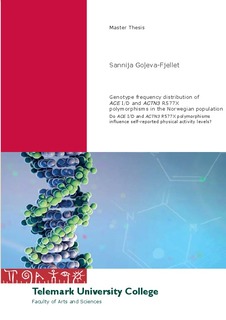| dc.description.abstract | Physical inactivity is a global challenge as physical activity (PA) levels are lower than ever before in human history, and burden of non-communicable diseases continue to increase worldwide. PA is a complex behaviour, and unlike earlier beliefs that environmental factors are main contributor to PA behaviour, genetic factors are receiving increasingly more attention. It is likely that there are many genes, each with only small effect size, influencing the PA levels. These, in turn, interact with other biological and environmental factors to determine activity level of an individual. Genes that favour higher physical fitness have likely a more indirect contribution to PA behaviour. Many potential candidate genes, influencing PA directly and indirectly, have been discovered. Despite many studies on the subject, results are still inconsistent, at least partly due to poor study design. ACE and ACTN3 genes are the most widely investigated in field of exercise genomics. Main focus of many studies is the effect these genes have on athlete sprint and endurance performance. However, increasing number of studies are directed towards the potential effects in the general public. ACE insertion/deletion (I/D) and ACTN3 R577X polymorphisms are of special interest. I-allele of the ACE gene, and X-allele for the ACTN3 gene has been generally associated with improved endurance, while D-allele and R-allele for the ACE and ACTN3 genes, respectively, has been associated with sprint and power related phenotypes. Both polymorphisms are also potential candidate genes for influencing PA levels. Frequency of the different alleles for the ACE I/D and ACTN3 R577X polymorphisms demonstrates a large variation in different population. The present study found that approximately 24% of the Norwegian subjects were homozygous for either D or I-allele for the ACE I/D polymorphism. Around 53% were heterozygous. For the ACTN3 R577X polymorphism, the frequencies were approximately 31%, 49%, and 21% for RR, RX and XX genotype, respectively. Genotype frequencies for both genes did not deviate from HardyWeinberg Equilibrium, and were similar to what had previously been found in other Caucasian populations. Female subjects showed significantly higher self-reported PA levels compared to male subjects. This corresponds well to other studies on the Norwegian population. There was no association between the two genes and self-reported PA levels in the study population of the present study. It is likely that other than ACE and ACTN3 genes influence levels of selfreported PA in the Norwegian population. | |
